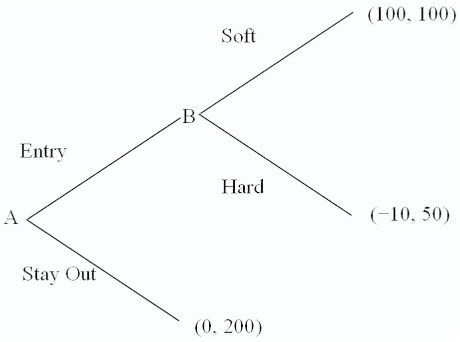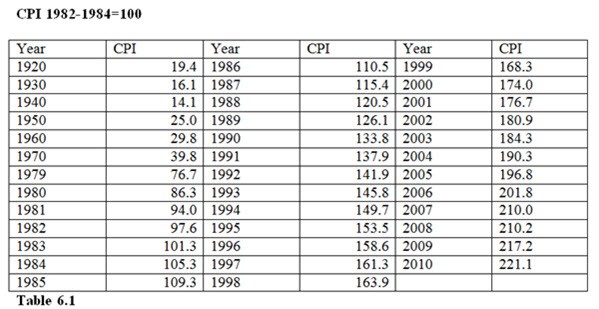The Clinton administration inherited a budget deficit from its predecessor. President Clinton instituted major tax increases that
A) reduced the budget deficit but increased the federal debt.
B) reduced the size of the deficit but could not eliminate it.
C) increased the budget deficit during his entire term.
D) brought the budget into balance and eventually into a surplus.
D
You might also like to view...
Which of the following is the LEAST? scarce?
A) college education. B) medicine. C) housing. D) weeds.
Refer to the normal-form game of price competition shown below.  Firm B is the incumbent facing potential entry from its rival, firm A. Firm A's strategies consist of {entry, stay out}. Firm B's strategies are then {hard if entry; hard if stay out; soft if entry; soft if stay out}. Find the non-subgame Nash equilibrium to this game, if one exists.
Firm B is the incumbent facing potential entry from its rival, firm A. Firm A's strategies consist of {entry, stay out}. Firm B's strategies are then {hard if entry; hard if stay out; soft if entry; soft if stay out}. Find the non-subgame Nash equilibrium to this game, if one exists.
A. There is no non-subgame Nash equilibrium to this game. B. Firm A plays {entry}; firm B plays {soft if entry}. C. Firm A plays {stay out}; firm B plays {hard if entry}. D. Firm A plays {entry}; firm B plays {hard if entry}.
If your tuition is $25,000 this semester, your books cost $1,500, you can only work 20 rather than 40 hours per week during the 15 weeks you are taking classes and you make $15 per hour, and your room and board is $7,500 this semester (same as if not attending college), then your opportunity cost of attending college this semester is
A. $26,500. B. $26,800. C. $31,000. D. $38,500.
Using Table 6.1, the inflation rate for 1999 would be
A. 2.7% (((168.3-163.9)/163.9)*100 %). B. 3.0% (174-163.9)/(2*163.9)*100%). C. 68.3% (168.3-100). D. 4.4% (168.3-163.9).